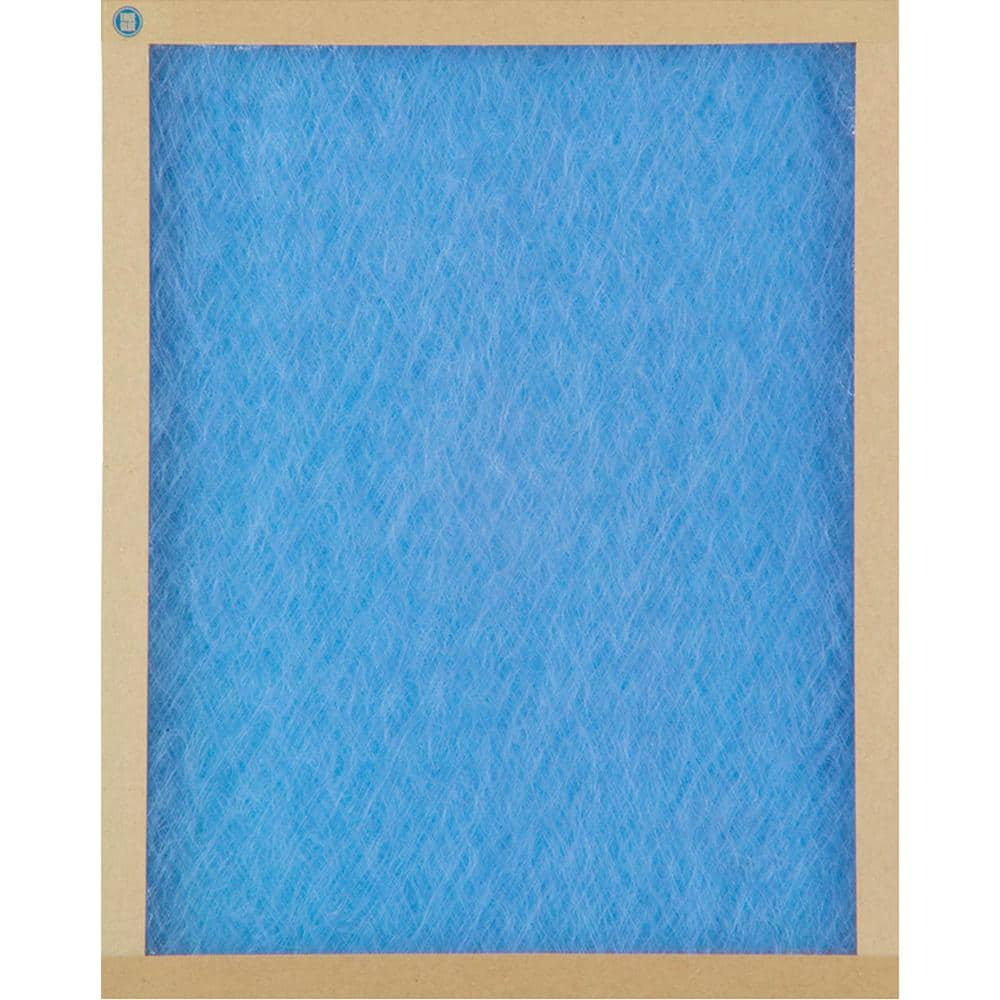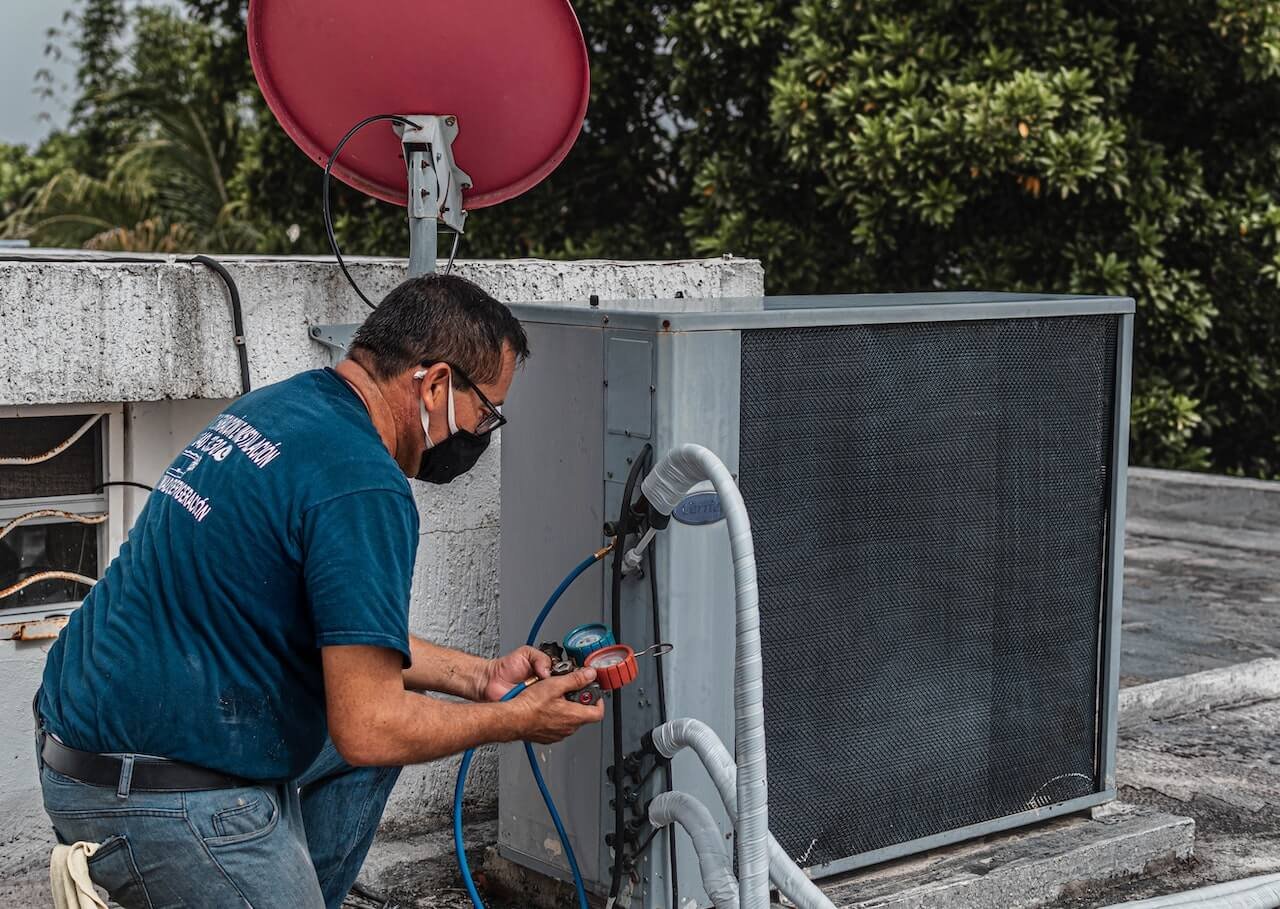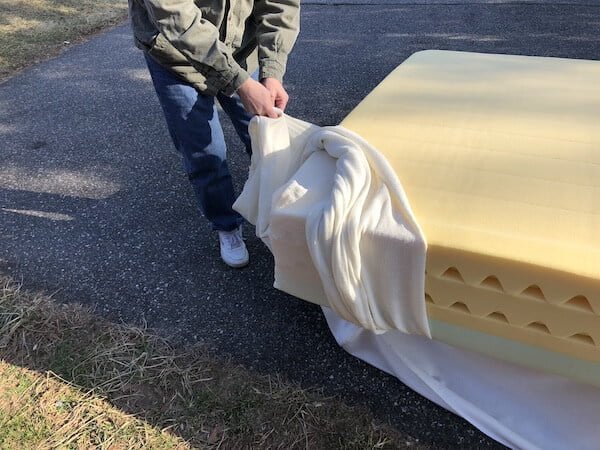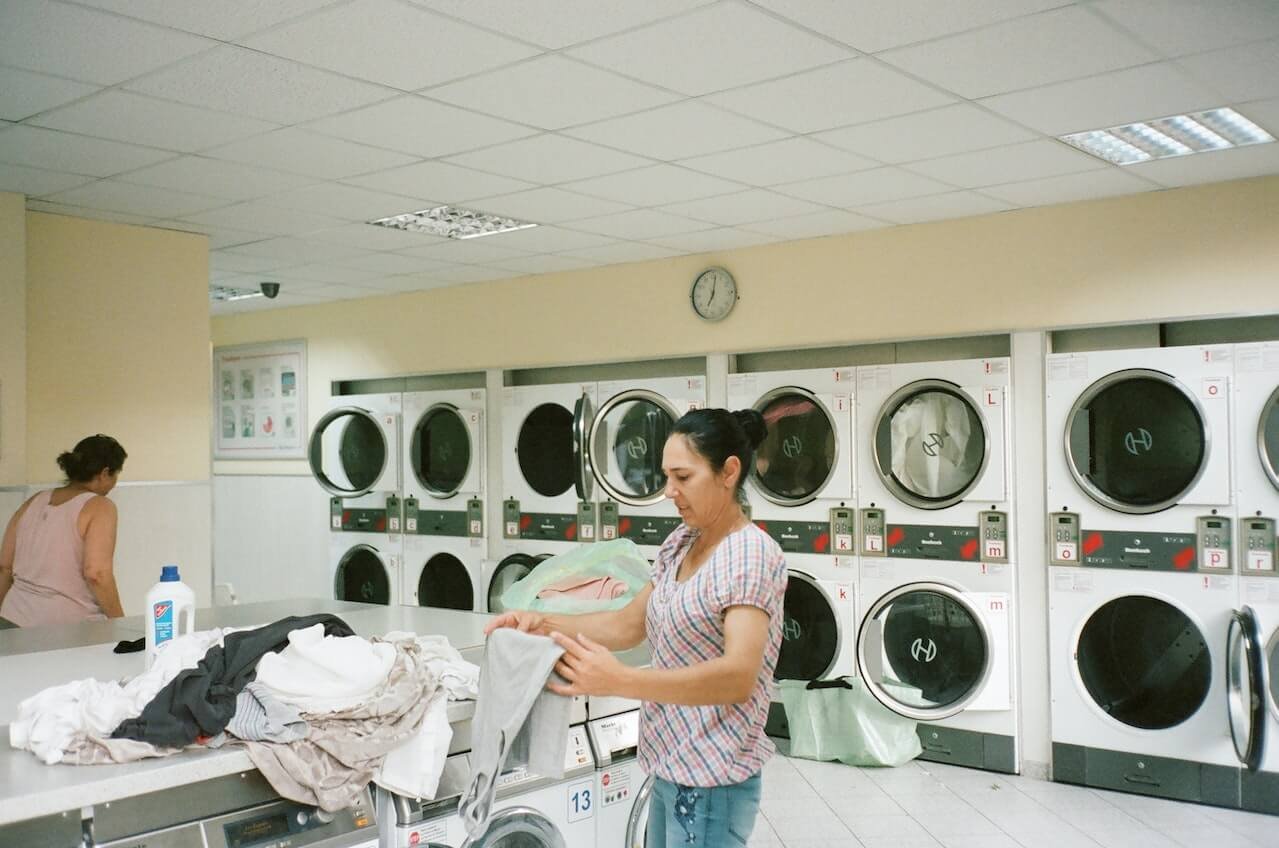A properly functioning air conditioning system relies heavily on the quality of the air pumped through it, making air filters an essential component. They function by collecting and retaining allergens in the air, such as dust, pollen, and germs so that they are not dispersed throughout a room. Yet, it can be difficult to identify which air filter is best for your air conditioner because there are so many to choose from.
In this piece, we’ll go over the various AC air filter options and their benefits and drawbacks. We will also discuss the significance of routine maintenance and filter replacement, as well as how to select the best air filter based on MERV rating, size, and price.
With the knowledge you get from this article, you’ll be able to choose the best air filter for your AC unit with confidence.
Types of Air Filters
A. Fiberglass Filters

1. What are Fiberglass Filters
Air filters made of fiberglass dominate the market for both commercial and residential HVAC systems. Filters like these have multiple layers of spun glass fibers to capture allergens in the air.
Low-cost fiberglass filters have a Minimum Efficiency Reporting Value (MERV) rating of 1–4, meaning they can trap up to 80% of larger particles like dust and lint but are less effective at trapping smaller particles like mold spores, bacteria, and viruses.
2. Pros & Cons of Fiberglass Filters
| Pros | Cons |
|---|---|
| 1. Fiberglass filters are the least expensive type of air filter | 1. Fiberglass filters have a low MERV rating |
| 2. They are easy to install and can be replaced quickly | 2. Need frequent replacement |
| 3. Good for low to medium air quality | 3. Not ideal for people with allergies or respiratory problems |
B. Pleated Filters

1. What are Pleated Filters
Filter materials like polyester, cotton, and paper are folded or pleated to create these filters. The increased surface area created by the pleats improves the filter’s ability to trap dust and other airborne particles.
The MERV rating of a pleated filter can vary from 5 to 13, depending on the filter material and its thickness. These filters are frequently used in heating, ventilation, and air conditioning (HVAC) systems at homes and businesses alike.
2. Pros and Cons of Using Pleated Filters
| Pros | Cons |
|---|---|
| 1. Pleated filters have 5–13 MERV ratings, higher than fiberglass filters. They can collect allergens, mold spores, and germs, making them better for allergy and respiratory sufferers. | 1. Pleated filters cost more than fiberglass filters, which may deter budget-conscious homebuyers. |
| 2. Depending on MERV rating and usage, pleated filters last 3–6 months longer than fiberglass filters. | 2. Pleated filters impede airflow more than fiberglass filters, reducing HVAC system efficiency if not changed routinely. |
| 3. Pleated filters enhance indoor air quality by capturing more airborne particles. | 3. If the filter housing doesn’t fit, pleated filters may need professional installation. |
C. Electrostatic Filters

1. What are Electrostatic Filters
Particles in the air are attracted by the electric charge of an electrostatic filter and then collected. Some electrostatic filters use a washable mesh material with a static charge that attracts and collects particles as air travels through the filter, while others are made of many layers of synthetic fibers.
Alternative electrostatic air filters use a disposable substance that gets charged as air travels past it. This filter’s MERV rating can be anywhere from 8 to 14, depending on the material and construction used.
2. Pros and Cons of Using Electrostatic Filters
| Pros | Cons |
|---|---|
| 1. Electrostatic filters have 8–14 MERV ratings, higher than fiberglass filters. They can trap pollen, pet dander, and dust mites, making them beneficial for allergy and respiratory sufferers. | 1. For budget-conscious homeowners, electrostatic filters are more expensive than fiberglass and pleated filters. |
| 2. Washable electrostatic filters are more sustainable than disposable ones since they may be reused. | 2. If not cleaned or updated regularly, electrostatic filters can lower HVAC system airflow and increase energy usage. |
| 3. Electrostatic screens with activated carbon can minimize air smells. | 3. Some HVAC manufacturers advise against using electrostatic filters. |
D. High-Efficiency Particulate Air (HEPA) Filters

1. What are HEPA Filters
HEPA filters are constructed from many layers of fine mesh to capture airborne particles. The filters are made to trap allergens including dust, pollen, mold spores, and pet dander that are as small as 0.3 microns.
Clean air is especially important in clinical and research environments, hence HEPA filters are frequently installed there. For those with severe asthma or allergies, they are also used in home HVAC systems.
2. Pros and Cons of Using HEPA Filters
| Pros | Cons |
|---|---|
| 1. HEPA filters capture 99.97% of 0.3-micron particles. They are ideal for allergy and respiratory sufferers. | 1. For budget-conscious homeowners, HEPA filters are more expensive than regular air filters. |
| 2. HEPA filters remove pollen, dust, and mold spores from indoor air, improving health. | 2. HEPA filters may require expensive HVAC system equipment. |
| 3, HEPA filters are mostly used in hospitals, labs, and residential HVAC systems. | 3. If not cleaned or updated regularly, HEPA filters can lower HVAC system airflow and increase energy usage. |
Factors to Consider When Choosing Air Filters
A. MERV Rating
1. MERV Rating and its Significance
You can tell how well an air filter works to keep the air free of particles by looking at its MERV rating. A higher number on the scale from 1 to 20 indicates a more effective filter.
The filter’s ability to trap particles of varying sizes is taken into account by the MERV rating; this includes everything from huge dust particles to microscopic particles like pollen and bacteria.
2. MERV Ratings for Various Situations
The user’s individual requirements and environmental conditions will determine the optimal MERV rating. Those who suffer from respiratory issues like asthma and allergies should prioritize purchasing air purifiers with a high MERV rating.
On the other hand, filters with higher MERV ratings may increase HVAC system resistance, leading to less airflow and greater energy usage. A expert should be consulted in order to ascertain the correct MERV rating for your HVAC system.
General advice for various situations:
- Residential homes: The majority of single-family dwellings only need a MERV rating of 8-13.
- Commercial buildings: For commercial facilities to maintain acceptable air quality and safeguard expensive machinery, MERV 13 or higher filters may be necessary.
- Healthcare facilities: In order to stop the transmission of airborne diseases, healthcare facilities need filters with the highest MERV ratings possible.
B. Size
1. Air Filter Size Matters
The efficiency and functionality of your HVAC system depend on the efficiency and functionality of your air filter, so it’s crucial to get a suitable size filter for your needs. Reduced efficiency in cleaning the air within your home is the result of an air filter that is too small for the job.
2. Tips for Choosing the Right Air Filter Size
Check the owner’s manual for your HVAC system or take a look at the measurements of your current air filter to figure out what size you need. It’s crucial to pick a filter with the same dimensions, and the size is usually marked on the side. The filter’s thickness should also be evaluated, as some HVAC units call for specially sized filters.
C. Cost
1. Air Filters: Cost vs. Quality
It’s crucial to strike a good balance between price and quality when shopping for air filters. Although larger MERV-rated filters may be more expensive up front, their long-term benefits in improved air quality and less energy use more than makeup for the difference.
Tips for balancing cost and quality
- Consider the MERV rating: In order to save money and get the level of filtration that you actually need, it’s important to select a filter with the right MERV rating.
- Consider the lifespan: Choosing a filter with the correct MERV rating is crucial in order to both save money and receive the level of filtering that is truly required.
- Consider the type of filter: Filters can be expensive, but the need to replace them is mitigated by the fact that some varieties, such as electrostatic filters, can be washed and reused.
- Buy in bulk: Certain filters, like electrostatic filters, can be cleaned and reused, which reduces the frequency with which they must be replaced and hence the associated costs.
Maintenance and Replacement of Air Filters
1. Maintaining and Replacing Air Filters Regularly
There are a number of reasons why it’s crucial to keep up with regular maintenance and replacement of air filters. Firstly, air filters aid in maintaining a healthy home environment by removing contaminants like dust, pollen, and germs that float through the air.
These particles accumulate in air filters over time, diminishing their efficiency and potentially leading to poor indoor air quality. Furthermore, clogged air filters can increase resistance in the HVAC system, resulting in decreased airflow and increased energy usage.
To keep the HVAC system running smoothly, it is important to replace the air filters regularly and perform other routine maintenance.
2. How Often to Replace Air Filters
Air filters should be changed out at various intervals depending on a number of factors such as the filter’s MERV rating, the room’s level of contamination, and the user’s preferences. A home’s air filter should be changed every three to four weeks, while a commercial building’s filter should be changed every one to six months.
Even though higher MERV-rated filters are better at removing contaminants from the air, they may need to be replaced more often. The filter should be inspected once a month and changed if it appears dirty or clogged.
3. Air Filter Replacement Steps
Here’s how to change your air filter:
- To avoid harm or damage to the HVAC system, be sure to turn it off before replacing the air filter.
- As a rule, the HVAC system’s air filter will be found in either the blower compartment or the return air duct.
- While replacing the air filter, be sure to remove the old one carefully from the housing before throwing it away.
- Make sure the new air filter fits snuggly in the housing before installing it.
- Once the replacement filter has been installed, the HVAC system should be turned on and checked for appropriate operation.
- Create a recurring calendar event to check the air filter once a month and replace it if necessary.







